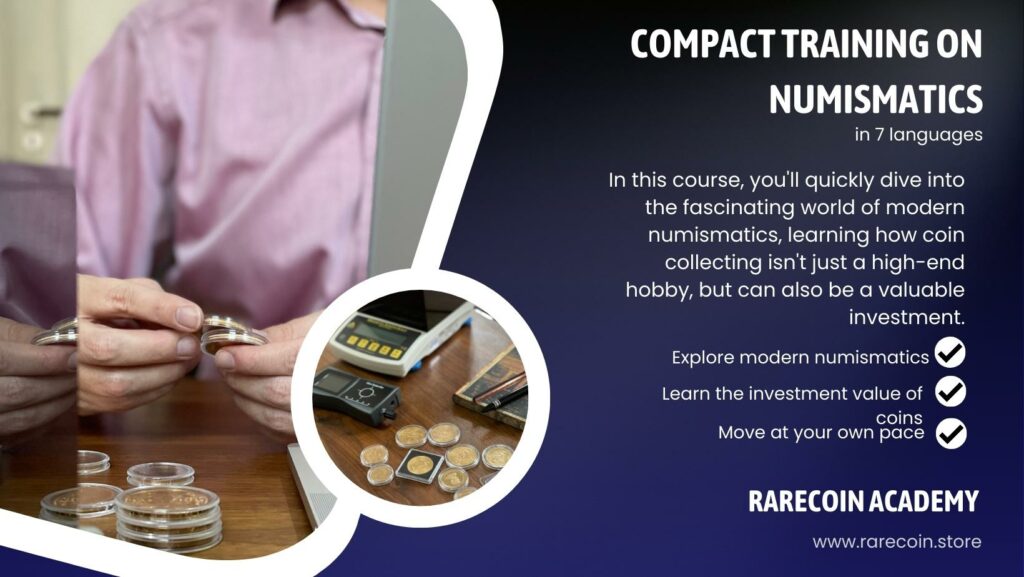
Part 7: Coin Valuation
- Factors that affect a coin’s value: rarity, demand, historical significance, etc.
- Coin price guides and catalogs
- FAQ about coin valuation
Valuing coins in modern numismatics is a complex task that is both an art and a science. As with many collectibles, the value of a coin depends on a number of factors and the current market situation. But what exactly influences the value of a coin? And how can collectors and enthusiasts orientate themselves and reliably assess the value of a coin?
Factors that shape coin value
Rarity: Of course, the rarity of a coin plays a crucial role in its value. A coin does not always have to be old to be considered rare. Modern coins with limited editions can also increase their value due to their rarity.
Demand in the market: As with many things, the interaction between supply and demand determines the price of coins. A rare coin that no one is asking for may have a lower value than a less rare coin that is in high demand.
Historical background: Coins that are historically significant or represent special events can be further upgraded. This historical significance can often multiply the value of the coin.
Condition and grading: The condition of a coin, its grade, has an enormous influence on its value. Precise grading scales help accurately determine a coin’s condition.
Metal content: Especially with precious metal coins, the pure material value can have a major influence on the overall value of the coin.
Provenance: A coin’s history, such as prominent previous owners or a special origin, can significantly increase its value.
Supporting tools: Coin price guides and catalogs
There are various resources such as coin price guides and catalogs that help collectors determine the value of a coin. These tools offer:
- Detailed information and images for coin identification: Detailed descriptions and high-resolution images help with identification.
- Historical context and dates.
- Current market prices based on auction results.
- Grading standards and guidelines for assessing the condition of coins.
These guides are often compiled by experienced numismatists and updated regularly to reflect the dynamics of the market. While they serve as excellent reference points, it is important to remember that the actual value of a coin may vary depending on specific market conditions, buyer preferences, and other special circumstances.
In conclusion, it is clear that coin grading is a multifaceted discipline in which both art and science play a role. A thorough understanding and the right resources are key to navigating the fascinating world of numismatics competently. With knowledge and attention, both novice and experienced collectors can recognize and appreciate the true value of their coins.
Further materials :
What is important to know about the numismatic value of gold coins?
Gold Coin Valuation and Pricing: A Brief Guide
Numismatics 1×1: Immerse yourself in the world of collecting rare coins

